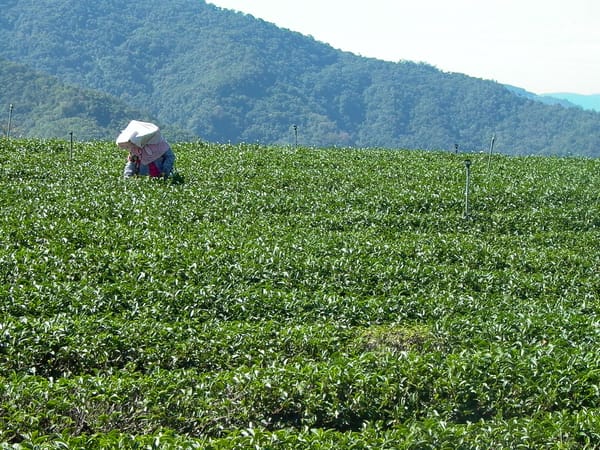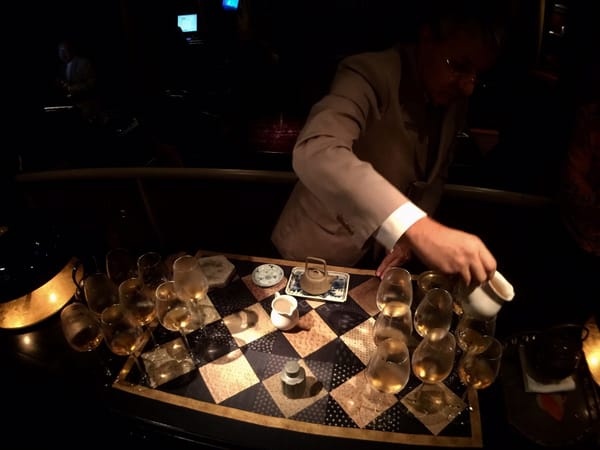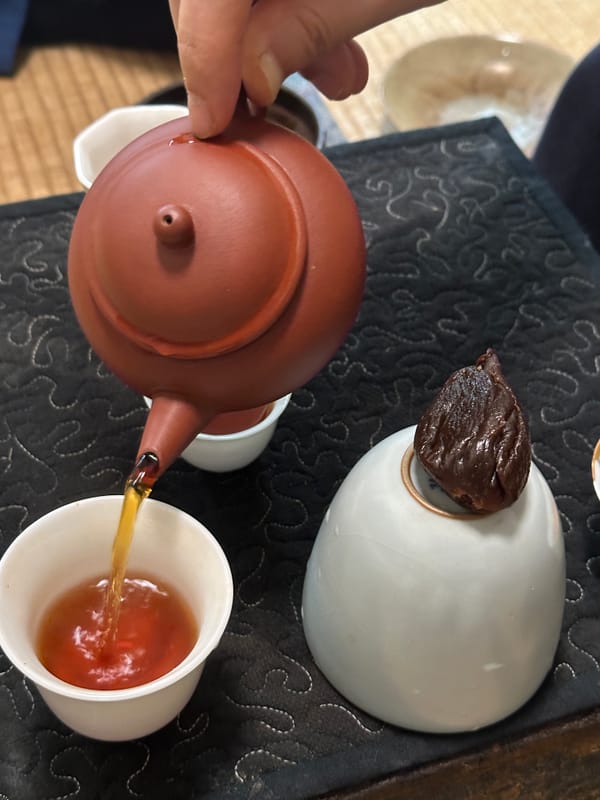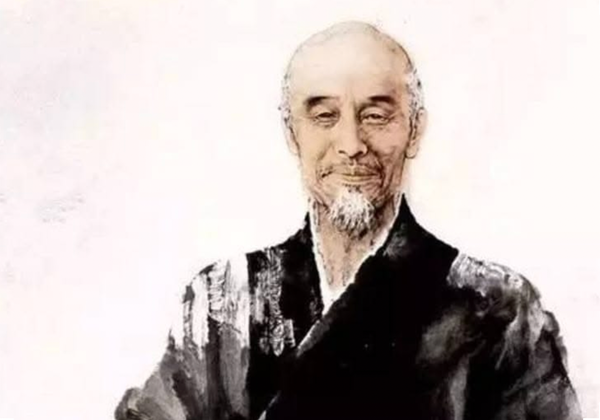Have you ever wondered why the same tea leaves taste dramatically different when brewed in different teaware?
That Sunday afternoon, I was in the kitchen trying to brew a pot of oolong tea when an old tea friend watched me pour premium Tieguanyin into a glass pot and gently shook his head: "Good tea in the wrong pot is like wearing sneakers to a wedding." He took out a small purple clay teapot from the cupboard and, with a few deft movements, filled the room with tea fragrance that astonished me.
It turns out that between tea and teaware, there exists such a subtle yet profound relationship.
The Thousand-Year Romance Between Tea and Vessel
In the long river of Chinese tea culture, tea leaves and teaware have existed in mutual dependence, like soulmates, elevating each other. Suitable teaware not only maximizes the release of the tea's aroma and flavor, but also brings unique visual and tactile pleasure to the tea drinker.
Chinese tea culture divides tea into six major categories: green tea, white tea, yellow tea, blue tea (oolong), red tea (black tea), and dark tea (post-fermented). Each type, due to different processing techniques, forms unique characteristics in color, aroma, and taste, thus requiring teaware of different materials and shapes to match, in order to fully express the tea's quality.
Today, let's venture into the wonderful world of teaware and tea leaves to find those perfect pairings that best stimulate the vitality of tea.
Green Tea and Silver: A Pure Encounter
Green tea, unfermented, preserves the most original fresh vitality of tea leaves. It emphasizes "clear fragrance and refreshing taste." Famous teas like Longjing, Biluochun, and Huangshan Maofeng are known for their elegant and otherworldly qualities.
What is the best teaware for Longjing tea? What material is suitable for Biluochun? When it comes to the best pairing for green tea, you might be surprised that it's silver!
Brewing green tea in silver may seem extravagant, but there's scientific reasoning behind it. Silver has excellent heat conductivity and antibacterial properties, maintaining stable water temperature while silver ions neutralize chlorine in water, making the tea sweeter.
When delicate Biluochun meets a silver pot, the fresh green tea liquor reflects against the silver shine, like the first ray of spring sunlight entering a valley—fresh and full of vitality. Each sip captures the most delicate fragrances from the leaves, as if holding an entire spring in your mouth.
Of course, if silver is not available, white porcelain gaiwan (lidded bowl) is also a good choice. The clean white porcelain highlights the tender green of the tea, allowing you to appreciate the wonderful posture of tea leaves unfurling in water.
White Tea and Glass: A Transparent Dialogue
White tea, lightly fermented, is characterized by the white down covering its surface. "One year tea, three years medicine, seven years treasure"—white tea's flavor becomes increasingly mellow with time.
What is the best teaware for Silver Needle? What's the optimal brewing method for White Peony? According to tea masters, these white teas are best brewed in transparent glass pots or cups.
Imagine when you pour boiling water into a glass pot—at that moment, the silver-white tea buds, like spears in snow, slowly sink and then rise, dancing in the water, forming an exquisitely beautiful ink painting. This visual feast cannot be provided by other teaware.
Through glass, you can clearly observe the entire process of white tea from dry to unfurled, appreciating the wonderful moment when tea leaves merge with water. The tea liquor is clear and transparent with a light apricot yellow color, tasting sweet and smooth with a lingering aftertaste.
As an old tea master once said: "White tea is not to be tasted, but an artwork to be appreciated." And glass vessels are the best display windows for this artwork.
Yellow Tea and Dehua Porcelain: Revealing the True Color
Yellow tea, which represents the "proper color" in traditional Chinese culture, is named after its unique "sealed yellowing" process. Yellow teas such as Junshan Silver Needle and Mengding Yellow Bud have bright golden liquor and a lasting high fragrance.
The best match for yellow tea is Dehua white porcelain.
Dehua porcelain, known as "China White," has a fine texture like congealed cream and a glaze as white as ivory. This porcelain is not only highly respected in China but once swept across Europe, becoming a treasured collection among royalty and nobility.
When golden tea liquor is served in pristine Dehua porcelain, it's like a golden sun hanging in a snow-white sky, creating a sharp yet elegant contrast. The tea's temperature is evenly conducted by the Dehua porcelain, allowing the unique chestnut and fruit fragrances of yellow tea to be fully released.
Take a sip, and the mellow mouthfeel perfectly blends with the smooth Dehua porcelain, like a dialogue between craftsmanship and nature.
Oolong Tea and Purple Clay: The Resonance of Rock Rhythm
Oolong tea (blue tea), a gem among semi-fermented teas, is represented by Wuyi Rock Tea, Tieguanyin, and Phoenix Dancong. It has both the fresh fragrance of green tea and the mellowness of red tea, praised as the "beauty" among teas.
What is the most suitable teapot material for oolong tea? What teaware makes Tieguanyin most fragrant? If you ask any experienced tea person, the answer is almost unanimous—purple clay teapot is the unrivaled choice.
Purple clay teapots are produced in Yixing, Jiangsu Province, famous for their unique material and exquisite craftsmanship. The purple clay is rich in minerals like iron and manganese, forming a microporous structure after high-temperature firing, providing both heat retention and breathability.
When you brew Wuyi Rock Tea in a purple clay teapot, a wonderful chemical reaction begins. The micropores in the pot can absorb some bitter substances from the tea, making the tea's aroma more prominent and the mouthfeel smoother. The minerals in the rock tea also resonate with the purple clay pot, releasing the "rock rhythm"—that unique honey-like sweetness and mineral texture.
As the number of uses increases, the purple clay pot gradually absorbs the essence of the tea, forming tea stains, and the color of the pot becomes more mellow. An old purple clay pot used for decades can emit a faint tea fragrance even when only hot water is poured in.
This is why tea enthusiasts often say: "A new pot is not as fragrant as an old one."
Red Tea and Bone China: An Elegant Encounter
Red tea (black tea), fully fermented, is represented by Keemun black tea, Lapsang Souchong, and Yunnan black tea, with bright red liquor, uplifting aroma, and mellow taste.
For red tea, this "English gentleman," the most suitable pairing is naturally bone china teaware.
Bone china, known for its translucent texture and pure white color, is both lightweight and durable due to the addition of bone ash. The English are particularly fond of bone china and have developed it into exquisite artwork.
When you pour red tea into a bone china cup, the amber tea liquor against the pristine white cup wall is like an elegant melody played by a cello. The smooth surface of the porcelain cup can retain the heat of the red tea while not absorbing the flavor, allowing the complete presentation of the malty, honey, or fruity notes of red tea.
Enjoying red tea with bone china represents not just a way of drinking tea, but also a cultural inheritance and fusion—Eastern tea leaves, Western porcelain, perfectly blended in the cup.
Dark Tea and Pottery: The Precipitation of Time
Dark tea, post-fermented, is represented by Pu'er tea and Liubao tea. This type of tea undergoes a special "pile fermentation" process, giving the tea leaves a unique aged aroma and mellow taste. Aged dark tea, like the sedimentation of years, is full of wisdom and philosophy.
The most compatible with this heavy tea is plain pottery.
Pottery is one of the earliest vessels used by humans, with a rough texture and plain colors. Those unglazed "natural pots," seemingly coarse on the surface, actually contain deep meaning. The rich minerals in pottery pots can interact subtly with the fermented substances in dark tea, reducing the bitterness of the tea and increasing smoothness.
When you brew aged Pu'er in a pottery pot, the warm pot body transmits the temperature of years, the tea liquor flows slowly in the cup, emitting woody, date-like, or aged aromas. Each sip is like tasting the flavor of time, allowing one to experience tranquility and profundity.
Tips for Choosing Teaware
How should beginners choose teaware? Which teapot material is best? Besides the classic pairings mentioned above, you can refer to the following points when choosing teaware:
- Pot size: Small pots are suitable for highly aromatic teas, while large pots are suitable for ordinary teas for daily drinking.
- Spout design: A spout with smooth water flow ensures that the tea liquor pours out evenly, preserving the tea's aroma.
- Lid fit: A well-fitting lid maintains the temperature and aroma of the tea.
- Personal preference: Most importantly, choose teaware that you like and find comfortable to use.
The Harmonious Resonance Between Teaware and Tea
Teaware is not just a vessel, but a bridge connecting people and tea. The right choice of teaware can allow the essence of tea leaves to be presented perfectly, and make the tea-tasting process more colorful.
As the ancients said: "Tea is valued for its vessel, and vessel is named for its tea." The relationship between tea and vessel is like that between kindred spirits, mutually enhancing and complementing each other.
Next time when you brew a pot of tea, think about it: what teaware would best complement this type of tea leaf? Perhaps you will discover a whole new tea world.
Let us together, through a cup of tea and a vessel, feel the warmth and wisdom of a thousand-year culture.
Frequently Asked Questions
Q1: Can I use a glass pot to brew Tieguanyin?
A: Not recommended. Glass pots have poor heat retention and cannot stimulate the heavy aroma of Tieguanyin. Purple clay pots are recommended. Glass pots are more suitable for white or green teas, allowing you to appreciate the beauty of tea leaves unfurling.
Q2: Besides bone china, what other suitable teaware is there for red tea?
A: Any type of porcelain can work, but bone china best preserves the aroma and temperature of the tea liquor. If you're pursuing visual effects, you can choose porcelain with exquisite paintings; if you value practicality, you can choose durable everyday ceramics.
Q3: What basic teaware should beginners prepare?
A: It's recommended to prepare a purple clay teapot (suitable for oolong tea), a set of white porcelain gaiwan (versatile), a glass pot (suitable for white and green teas), and several tasting cups. This configuration can meet the brewing needs of most tea types.
Q4: What is the best pot for brewing Pu'er tea?
A: Raw Pu'er is suitable for purple clay pots or gaiwan; ripe Pu'er is best with pottery pots. The minerals in pottery pots can effectively filter the pile aroma of ripe Pu'er, making the tea liquor more gentle and smooth.
Q5: How should teapots be maintained to extend their service life?
A: For purple clay and pottery pots, it's recommended to use one pot exclusively for one type of tea. After use, clean them without detergent and air dry naturally. Glass pots should be thoroughly cleaned to avoid tea stains. Silver pots need regular maintenance to prevent oxidation. Porcelain should avoid extreme temperature differences to prevent cracking.
This is not just a feast for the taste buds, but also a cultural journey across time and space. The perfect combination of teaware and tea leaves makes each tea tasting a dialogue of the soul.
Whether you are a tea veteran or a beginner, I hope this guide helps you find the best pairing of teaware and tea leaves for yourself, beginning a wonderful tea-tasting journey.





